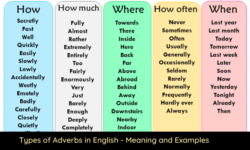Present Simple Tense Example & Exercises (Free PDF)
In this lesson you will learn about simple present tense with example, exercises and also you can get downloadable free PDF. The present simple tense is one of the fundamental tenses in English and allows you to describe habitual actions, general truths, and situations that are always or generally true, making it essential for expressing basic ideas and intentions in daily life.
| Form | Structure | Example |
|---|---|---|
| Positive | Subject + base form of the verb | She walks to school every day. |
| Negative | Subject + do/does + not + base form of the verb | He does not (doesn’t) like spinach. |
| Question | Do/Does + subject + base form of the verb? | Do you play the guitar? |
Detailed Examples:
Positive
- I remember you.
- She reads books.
- They go to the gym.
Negative
- I do not (don’t) remember you.
- She does not (doesn’t) read books.
- They do not (don’t) go to the gym.
Question
- Do I know you?
- Does she read books?
- Do they go to the gym?

When to Use Present Simple Tense?
You use the present simple tense to talk about people’s routines and habits.
➜Tom goes for a walk every morning.
➜We always spend the summer in Turkey.
You use the present simple to talk about things that are permanent or always true, and in zero conditional sentences.
➜The office opens at seven every morning.
➜Water boils at 100c.
You use the present simple to talk about official scheduled or timetabled events, e.g. train timetables, television listing, etc.
➜This train arrives in London at 07.15.
➜The film starts at eight.
You usually use the present simple (not the present continuous) with certain verbs, e.g. agree, believe, feel, hate, hear, know, like, love, prefer, see, smell, taste, understand, etc.
➜ – She doesn’t understand the question. CORRECT
X – She isn’t understanding the question. WRONG
➜ – I believe in life after death. CORRECT
X – I am believing in life after death. WRONG
When to Add -S to Regular Verbs
In the present simple tense, you add “s” to the base form of the verb when the subject is a singular third person (he, she, it).
Here are the rules:
- For most verbs, simply add “s”:
- He works at a bank.
- She runs every morning.
- It seems fine.
- For verbs ending in -s, -ss, -sh, -ch, -x, or -z, add “es”:
- He misses the bus.
- She washes the dishes.
- It catches the ball.
- For verbs ending in a consonant + y, change the “y” to “i” and add “es”:
- He studies hard.
- She tries her best.
- It carries a lot of weight.
- For verbs ending in a vowel + y, simply add “s”:
- He plays the piano.
- She enjoys the movie.
- It stays warm.

Simple Present Tense PDF
Present Simple Tense PDF – download
Learn Present Simple Tense PDF – download



